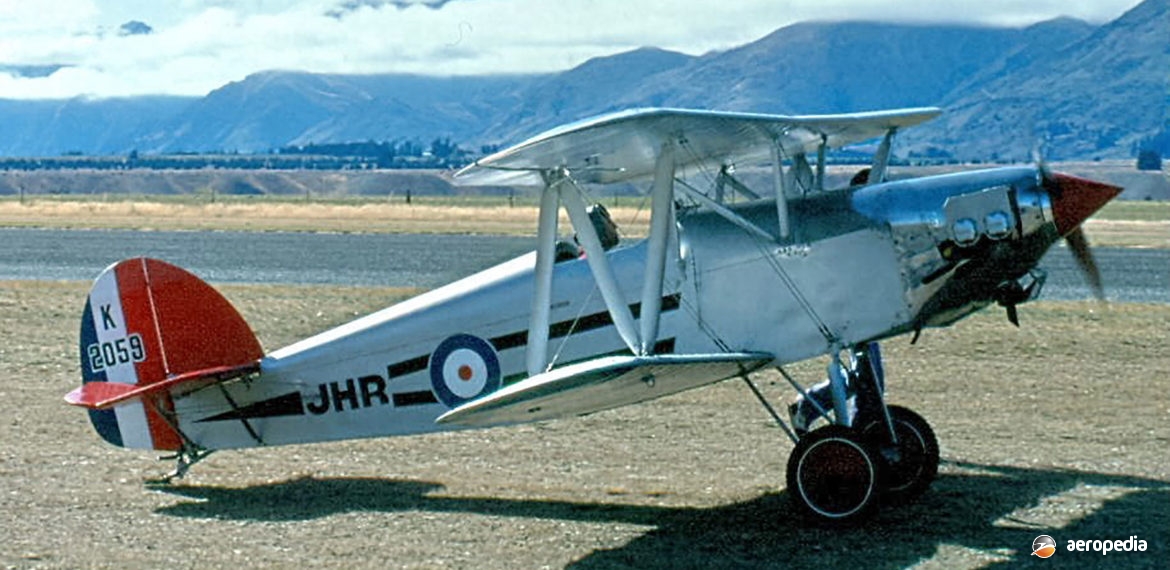Photograph:
Isaacs Fury ZK-JHR (c/n AACA/522) at Wanaka, New Zealand in 1992 (David C Eyre)
Country of origin:
United Kingdom
Description:
Single-seat light sport biplane
Power Plant:
One 93 kw (125 hp) Lycoming O-290 four-cylinder horizontally-opposed air-cooled engine
Specifications:
- Wingspan [upper wing]: 6.4 m (21 ft)
- Wingspan [lower wing]: 5.54 m (18 ft 2 in)
- Length: 5.87 m (19 ft 3 in)
- Height: 2.16 m (7 ft 1 in)
- Wing area: 11.5 m² (123.8 sq ft)
- Max speed at sea level: 185 km/h (115 mph)
- Cruising speed: 119 km/h (74 mph)
- Stalling speed: 68 km/h (42 mph)
- Rate of climb at sea level: 488 m/min (1,600 ft/min)
- Range: 161 km (100 miles)
- Empty weight: 322 kg (170 lb)
- Loaded weight: 450 kg (1,000 lb)
History:
In 1961 John O Isaacs of Southampton in the United Kingdom commenced the design of a seven-tenths scale wooden replica of one of Britain’s most famous biplane fighters, the Hawker Fury, which saw service with the Royal Air Force (RAF) in the 1930s. After a few months, work commenced on the prototype, which was flown for the first time on 30 August 1963 fitted with a 48 kw (65 hp) Walter Mikron engine. After some testing, the design was re-stressed and a 93 kw (125 hp) Lycoming engine was fitted in 1967. It then became known as the Fury Mk II. Since then plans have been sold to amateur constructors and a number have been built throughout the world.
A number of examples have been completed and registered in New Zealand, including ZK-DMN (c/n K1790 or AACA/179/1) in February 1976 and ZK-JHR (c/n AACA/522).
At least one has been completed in Australia, becoming VH-UCO (c/n AACA /301/2) in Queensland, and another was registered 19-7826 (c/n K.1926) under Recreational Aviation Australia (RAA) Regulations. The registration VH-MWP (c/n W72) was allotted to a Mk II, the construction of which was commenced by Mr M Pimm of Margaret River, WA, but it is not known to have been completed.
The Fury was of all-wood construction, with the wing being fabric covered and the fuselage plywood covered. As with the original Fury, the undercarriage was fixed.

